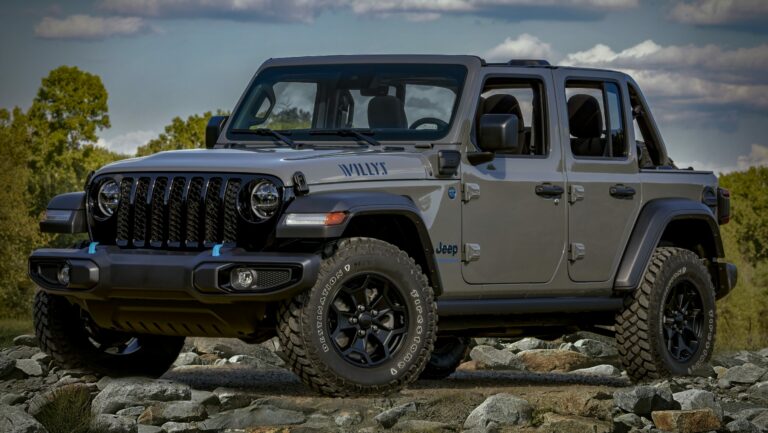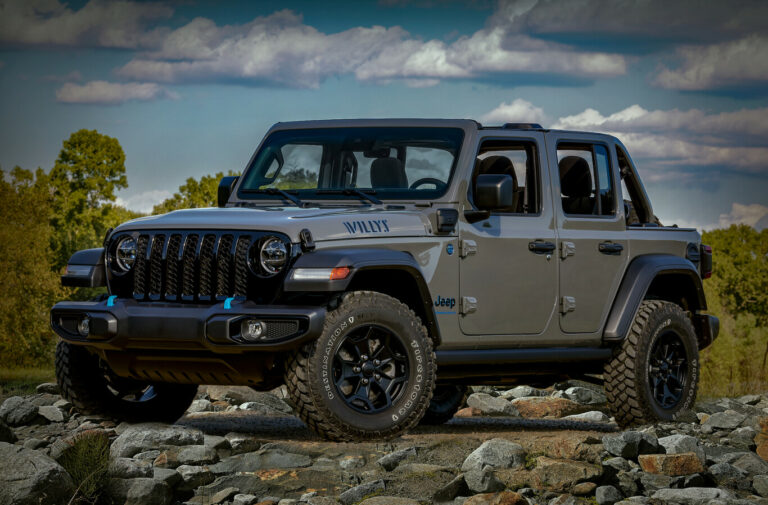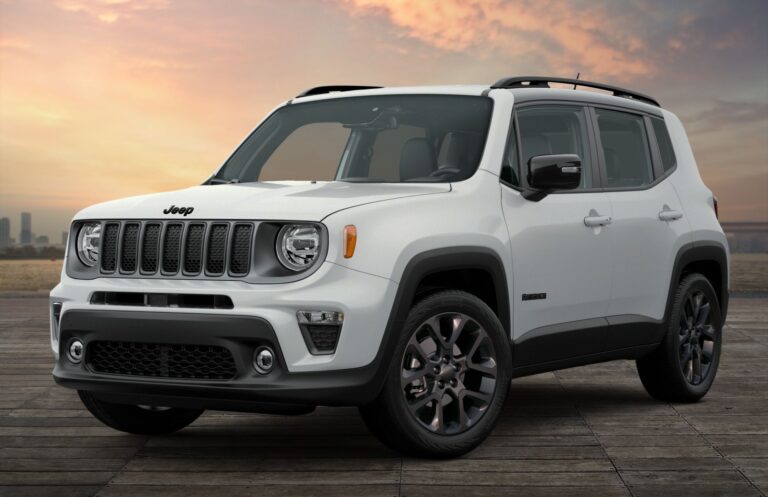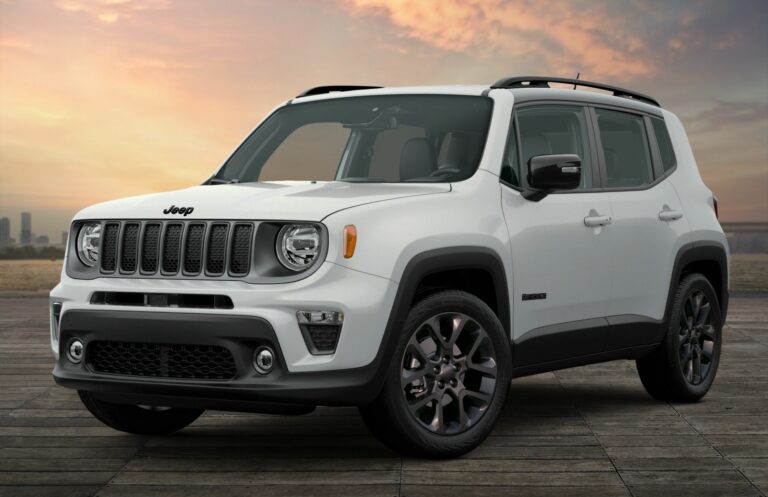Jeep Liberty For Sale 2002: Your Comprehensive Guide to Buying an Early Icon
Jeep Liberty For Sale 2002: Your Comprehensive Guide to Buying an Early Icon /jeeps.truckstrend.com
Introduction: The Enduring Appeal of the 2002 Jeep Liberty
In the realm of compact SUVs, few vehicles hold the unique blend of daily utility and genuine off-road capability quite like the Jeep Liberty. Introduced in 2002, the Liberty (internal code KJ) marked a significant shift for Jeep, replacing the beloved but aging Cherokee XJ. It was a vehicle designed to appeal to a broader market, offering modern amenities and a more refined ride, yet retaining the core adventurous spirit synonymous with the Jeep brand.
Jeep Liberty For Sale 2002: Your Comprehensive Guide to Buying an Early Icon
For those scouring the market for a pre-owned vehicle today, the 2002 Jeep Liberty stands out as an intriguing option. It represents the very first model year of a new generation, embodying a particular era of Jeep design and engineering. Its age means a significantly lower purchase price, making it an accessible entry point into the world of 4×4 ownership or a practical, versatile daily driver for budget-conscious buyers. Whether you’re seeking a reliable commuter, a weekend adventure vehicle, or a project car with potential, understanding the nuances of a 2002 Jeep Liberty for sale is crucial. This comprehensive guide will delve into everything you need to know, from its specifications and benefits to common issues, buying tips, and ownership advice.
The 2002 Jeep Liberty: A Glimpse into Its Legacy
The 2002 Jeep Liberty made a bold statement with its distinct, rounded styling, moving away from the boxy aesthetics of its predecessor. It was the first Jeep vehicle to feature an independent front suspension (IFS), a design choice aimed at improving on-road handling and ride comfort, though initially met with mixed reactions from purists. Despite this, the Liberty retained a solid rear axle, ensuring respectable off-road articulation and durability.
Under the hood, buyers had two primary engine choices:
- 2.4L PowerTech I4 (Inline-4): This engine, producing 150 horsepower and 165 lb-ft of torque, was primarily available with a 5-speed manual transmission, though a 4-speed automatic was optional. It offered decent fuel economy for its time but could feel underpowered, especially with the automatic or in 4WD applications.
- 3.7L PowerTech V6: This was the more popular and capable option, generating 210 horsepower and 235 lb-ft of torque. It was typically paired with a 4-speed automatic transmission (the 42RLE), though a manual was also available initially. The V6 provided ample power for highway cruising and off-road trails.

Drivetrain options were a cornerstone of the Liberty’s appeal:
- 2WD: Rear-wheel drive was standard for those prioritizing efficiency and on-road performance.
- Command-Trac Part-Time 4WD: A traditional part-time 4×4 system, ideal for off-road use, snow, or slippery conditions, but not for continuous use on dry pavement.
- Selec-Trac Full-Time 4WD: A more advanced system offering full-time 4WD capability, which could be used on any surface, along with a part-time 4WD mode and 4-Lo for more challenging situations.
The 2002 Liberty was available in several trim levels:
- Sport: The base model, offering essential features and a more utilitarian feel.
- Limited: The top-tier trim, featuring more chrome accents, alloy wheels, and a range of comfort and convenience features like leather seats and automatic climate control.
- Renegade: A rugged, off-road oriented trim with unique exterior styling (like the integrated fog lights in the front bumper), roof light bar, and more aggressive tires.

This combination of engine, transmission, and drivetrain options, coupled with its distinctive looks and respectable ground clearance, positioned the 2002 Jeep Liberty as a versatile compact SUV capable of tackling both city streets and challenging trails.
Why Buy a 2002 Jeep Liberty Today? Benefits and Appeal
Despite its age, the 2002 Jeep Liberty continues to attract buyers for several compelling reasons:
- Affordability: This is arguably the biggest draw. A 2002 Liberty can be purchased for a fraction of the cost of a newer SUV, making it an excellent option for buyers on a tight budget or those looking for a secondary vehicle.
- Genuine Off-Road Capability: Unlike many modern "soft-roaders," the Liberty, especially with a 4WD system, offers legitimate off-road prowess. Its short wheelbase, decent ground clearance, and available low-range gearing make it surprisingly capable on trails, a true testament to its Jeep lineage.
- Robust Powertrains (with caveats): The 3.7L V6 engine, if properly maintained, can be quite durable. Its simple design often means less complex repairs compared to newer, more technologically advanced engines. The manual transmission option offers a more engaging driving experience and can be more reliable than automatics.
- Practicality and Utility: As an SUV, the Liberty offers ample cargo space with fold-flat rear seats, making it suitable for hauling gear, groceries, or even small furniture. It’s a versatile daily driver.
- Aftermarket Support: Due to its popularity and Jeep branding, there’s a good aftermarket for parts, upgrades, and accessories. Lift kits, bumpers, and other modifications are readily available for those looking to enhance its off-road performance or aesthetics.
- Classic Jeep Feel: For some, the 2002 Liberty represents a bridge between the classic, rugged Jeeps and more modern, refined SUVs. It offers a certain raw, adventurous feel that newer crossovers often lack.
Key Considerations Before Buying: What to Look For
Purchasing a 22-year-old vehicle requires a meticulous inspection process. The 2002 Jeep Liberty, while capable, has several known issues that potential buyers must be aware of.
- Rust, Rust, Rust: This is perhaps the most critical concern for any early-model Liberty, especially in regions that use road salt.
- Frame Rails: Inspect the frame thoroughly, particularly near the rear control arm mounts and in front of the rear wheels. Significant rust here can be a deal-breaker.
- Rocker Panels: These are prone to rusting out from the inside.
- Suspension Components: Control arms, shock mounts, and spring perches can also suffer from heavy corrosion.
- Body Panels: Wheel wells, door bottoms, and the tailgate can show signs of rust.
- Engine Health:
- 3.7L V6: Listen for any knocking, ticking, or excessive valvetrain noise. Check for oil leaks (especially from the valve covers or oil pan). While less common in 2002, some early 3.7L engines experienced head gasket issues or valve guide wear leading to excessive oil consumption. Check the coolant reservoir for oil contamination and vice versa.
- 2.4L I4: Generally robust, but check for timing chain noise (a rattling sound from the front of the engine), which indicates wear.
- Maintenance Records: Always ask for service history. Regular oil changes are crucial.
- Transmission Functionality:
- 4-Speed Automatic (42RLE): Check for smooth shifts. Any harsh shifts, slipping, or delayed engagement could indicate a problem. Test it both cold and hot. Check the transmission fluid; it should be reddish-pink and not smell burnt.
- Manual: Test the clutch for slippage and smooth engagement. Ensure all gears engage easily without grinding.
- Suspension and Steering:
- Ball Joints: The upper and lower ball joints are a notorious weak point on the Liberty. Listen for clunking or popping noises when going over bumps or turning. Check for excessive play when the wheel is lifted off the ground (grab the wheel at 12 and 6 o’clock and try to wiggle it). This is a very common and often necessary repair.
- Bushings: Inspect control arm bushings, sway bar bushings, and strut mounts for cracks or wear.
- Steering Rack: Check for power steering fluid leaks and listen for pump noise.
- 4WD System: If equipped, test all 4WD modes (2WD, 4-Hi, 4-Lo, and Full-Time 4WD if Selec-Trac). Ensure the transfer case shifts smoothly and that there are no unusual noises (grinding, clunking) when engaged. Drive a short distance in 4-Lo to confirm it works.
- Electrical Issues:
- Power Window Regulators: Another common failure point. Test all power windows multiple times. They may work slowly or get stuck.
- AC System: Ensure the air conditioning blows cold.
- Dashboard Lights: Check for any warning lights (Check Engine, ABS, Airbag, etc.).
- Brakes: Standard checks apply: feel for pulsation during braking, listen for squealing, and check pad and rotor wear.
- Tires: Check tread depth and ensure even wear. Uneven wear can indicate alignment issues or worn suspension components.
- Undercarriage Damage: Look for dents, scrapes, or bent components that could indicate previous off-road abuse or accidents.
The Buying Process: A Step-by-Step Guide
Navigating the purchase of a 2002 Jeep Liberty requires a structured approach to ensure you make an informed decision.
- Define Your Needs and Budget:
- Purpose: Will it be a daily driver, an off-roader, or a project?
- Budget: Beyond the purchase price, factor in immediate repairs (like those common issues listed above), registration, insurance, and potential ongoing maintenance. A general rule for older vehicles is to have at least 20-30% of the purchase price set aside for initial repairs.
- Research and Locate Listings:
- Utilize online marketplaces (Craigslist, Facebook Marketplace, AutoTrader, eBay Motors) and local dealerships.
- Filter by year (2002), mileage, and location. Be prepared to travel for a good example.
- Initial Contact and Questions:
- Before seeing the vehicle, ask the seller specific questions:
- "Are there any known mechanical issues or warning lights?"
- "What’s the maintenance history like? Do you have records?"
- "Has the vehicle ever been in an accident?"
- "Is there any significant rust on the frame or body?"
- "Why are you selling it?"
- Request photos, especially of potential problem areas like the undercarriage.
- Before seeing the vehicle, ask the seller specific questions:
- First Impression and Visual Inspection:
- Exterior: Look for consistent paint color, panel gaps, and signs of accident repair. Check for significant dents, scratches, and, most importantly, rust.
- Interior: Check the condition of seats, carpets, headliner, and dashboard. Test all electronics (radio, AC, power windows, lights, wipers).
- Under the Hood: Check fluid levels (oil, coolant, brake fluid, power steering), look for leaks, and assess the overall cleanliness. A very clean engine bay might hide leaks, while a very dirty one suggests neglect.
- Underneath: Get down and look at the frame, exhaust, suspension components, and differential. This is where rust and off-road damage often hide.
- The Test Drive:
- Drive on various road types: city streets, highway, and if possible, some uneven terrain.
- Listen for unusual noises (clunks, squeaks, grinding, whining).
- Test acceleration, braking (straight and firm), and steering (no excessive play, no pulling).
- Pay attention to how the transmission shifts.
- If 4WD, engage and disengage all modes and drive slowly in a safe area to confirm functionality.
- Pre-Purchase Inspection (PPI):
- This is the single most important step. Even if you’re mechanically inclined, have a trusted, independent mechanic (preferably one familiar with Jeeps) perform a comprehensive inspection. They will spot issues you might miss and can give you an estimate for necessary repairs. This small investment can save you thousands down the line.
- Negotiation:
- Based on the PPI findings and any observed flaws, be prepared to negotiate the price. Use any identified issues as leverage.
- Paperwork:
- Ensure the title is clear and matches the seller’s ID. Get a bill of sale that includes the VIN, mileage, sale price, and both parties’ signatures. Understand your local registration and transfer requirements.
Maintenance and Ownership Tips for a 2002 Liberty
Owning a 2002 Jeep Liberty can be a rewarding experience, but it requires proactive maintenance.
- Regular Fluid Changes: Stick to the manufacturer’s recommendations for oil, transmission fluid, transfer case fluid, and differential fluid changes. Given its age, consider slightly more frequent changes.
- Proactive Ball Joint Replacement: If the ball joints haven’t been replaced recently, budget for this. It’s a critical safety component.
- Rust Prevention: If you live in a corrosive environment, consider undercoating or rust-proofing treatments to slow down corrosion. Wash the undercarriage regularly, especially after driving on salted roads.
- Monitor Electrical Components: Be aware of the common power window regulator failures. Aftermarket replacements are available and often more robust.
- Check Belts and Hoses: These are prone to drying out and cracking with age. Replace them as a preventative measure.
- Tire Care: Rotate tires regularly and maintain proper inflation to maximize tire life and ensure safe handling.
- Exercise the 4WD: If you have a 4WD model, engage the 4WD system (especially 4-Hi and 4-Lo) at least once a month, even for a short distance, to keep the components lubricated and functioning properly.
- Join Online Forums: Communities like "JeepKJ.com" or "LostKJs.com" are invaluable resources for troubleshooting, DIY guides, and connecting with other Liberty owners.
Potential Challenges and Solutions
- Challenge: Age-Related Wear and Tear: Gaskets, seals, hoses, and rubber bushings will naturally degrade over two decades.
- Solution: Budget for preventative maintenance and be prepared for minor repairs. Replace components before they fail catastrophically.
- Challenge: Significant Rust: Frame rust can be a deal-breaker.
- Solution: Thorough pre-purchase inspection. If buying a rusty one, ensure it’s surface rust that can be treated, not structural compromise. Avoid severely rusted frames.
- Challenge: Finding Well-Maintained Examples: Many older Liberties have been neglected or abused.
- Solution: Be patient, expand your search radius, and prioritize a detailed PPI. A higher mileage vehicle with excellent maintenance records is often better than a low-mileage one with no history.
- Challenge: Fuel Economy: The 3.7L V6 is not known for its fuel efficiency.
- Solution: Understand that you’re buying a capable SUV, not a hybrid. Factor fuel costs into your budget. The 2.4L I4 offers slightly better economy but less power.
Jeep Liberty For Sale 2002 Estimated Price Guide
Please note that these prices are estimates and can vary significantly based on location, actual condition, mileage, trim level (Sport, Limited, Renegade), and the presence of desirable options (like Selec-Trac 4WD).
| Condition Category | Estimated Price Range (USD) | Key Factors Influencing Price |
|---|---|---|
| Poor / Parts Car | $500 – $1,500 | Significant mechanical issues (non-running, major engine/transmission problems), severe rust, extensive body damage, salvage title. Primarily for parts or a major project. |
| Fair | $1,500 – $3,000 | Runs and drives but has noticeable mechanical issues (e.g., bad ball joints, check engine light, rust holes, AC not working), high mileage, cosmetic flaws. Requires immediate repairs. |
| Good | $3,000 – $5,500 | Runs well, minor mechanical issues (if any) that are not critical, moderate mileage (150,000-200,000 miles), some cosmetic wear. Well-maintained but not perfect. |
| Excellent | $5,500 – $8,000+ | Very well-maintained, low mileage for its age (<150,000 miles), minimal to no rust, all systems functional, clean interior/exterior. Rare to find in this condition. |
Disclaimer: These are general estimates. Always conduct a thorough inspection and/or a Pre-Purchase Inspection (PPI) by a qualified mechanic before purchasing.
Frequently Asked Questions (FAQ) about the 2002 Jeep Liberty
Q1: Is the 2002 Jeep Liberty reliable?
A1: Reliability is subjective and largely depends on previous maintenance. While the 2002 Liberty has some known common issues (e.g., ball joints, window regulators, rust), the engines (especially the 3.7L V6 if maintained) can be quite durable. If you find one that has been well-cared for and address common failure points proactively, it can be a relatively reliable vehicle. Neglected examples will be problematic.
Q2: What are the most common problems with the 2002 Jeep Liberty?
A2: The most frequently reported issues include: severe rust (frame, rocker panels), upper and lower ball joint failures, power window regulator failures, and potential issues with the 3.7L V6 engine (e.g., head gasket issues, valve guide wear, though less prevalent in 2002 compared to later years). Transmission issues (especially the 42RLE automatic) can also occur with high mileage or poor maintenance.
Q3: Is the 2002 Jeep Liberty good off-road?
A3: Yes, for a compact SUV of its era, the 2002 Jeep Liberty is surprisingly capable off-road. Its solid rear axle, available low-range gearing (Command-Trac or Selec-Trac), and decent ground clearance make it suitable for moderate trails, mud, and snow. It offers more off-road capability than many modern crossovers.
Q4: What kind of fuel economy can I expect from a 2002 Jeep Liberty?
A4: Fuel economy is not a strong suit. The 3.7L V6 typically averages around 15-18 MPG combined, depending on driving style, 2WD/4WD, and maintenance. The 2.4L I4 might offer slightly better numbers, around 17-20 MPG.
Q5: Can I lift a 2002 Jeep Liberty?
A5: Yes, lifting a 2002 Jeep Liberty is a popular modification. Many aftermarket companies offer lift kits ranging from simple coil spacers to full suspension replacement kits, allowing for larger tires and increased ground clearance for off-roading.
Q6: What’s the difference between Command-Trac and Selec-Trac 4WD systems?
A6:
- Command-Trac: This is a part-time 4WD system. It offers 2WD and part-time 4WD High (for loose surfaces like dirt, snow, or mud) and 4WD Low (for serious off-roading). It cannot be used on dry pavement in 4WD mode as it lacks a differential between the front and rear axles, which can cause driveline binding and damage.
- Selec-Trac: This is a full-time 4WD system. It offers 2WD, full-time 4WD (which can be used on any surface, including dry pavement, as it has a differential), part-time 4WD High, and 4WD Low. It’s more versatile and user-friendly for varied conditions.
Conclusion: An Adventurous Past, a Practical Present
The 2002 Jeep Liberty, as the inaugural model year of its generation, offers a unique blend of classic Jeep ruggedness and early 21st-century SUV refinement. It represents an affordable gateway into the world of genuine 4×4 vehicles, capable of handling daily commutes with reasonable comfort while still possessing the DNA for off-road adventures.
However, purchasing a vehicle of this vintage demands diligence. A thorough inspection, particularly for rust and common mechanical issues, is paramount. By understanding its strengths, weaknesses, and the specific care it requires, you can transform a potential gamble into a rewarding ownership experience. For the informed and prepared buyer, a 2002 Jeep Liberty for sale isn’t just an old SUV; it’s an opportunity to own a piece of Jeep history, a versatile workhorse, and a capable companion for years of practical use and spirited exploration.
![]()



